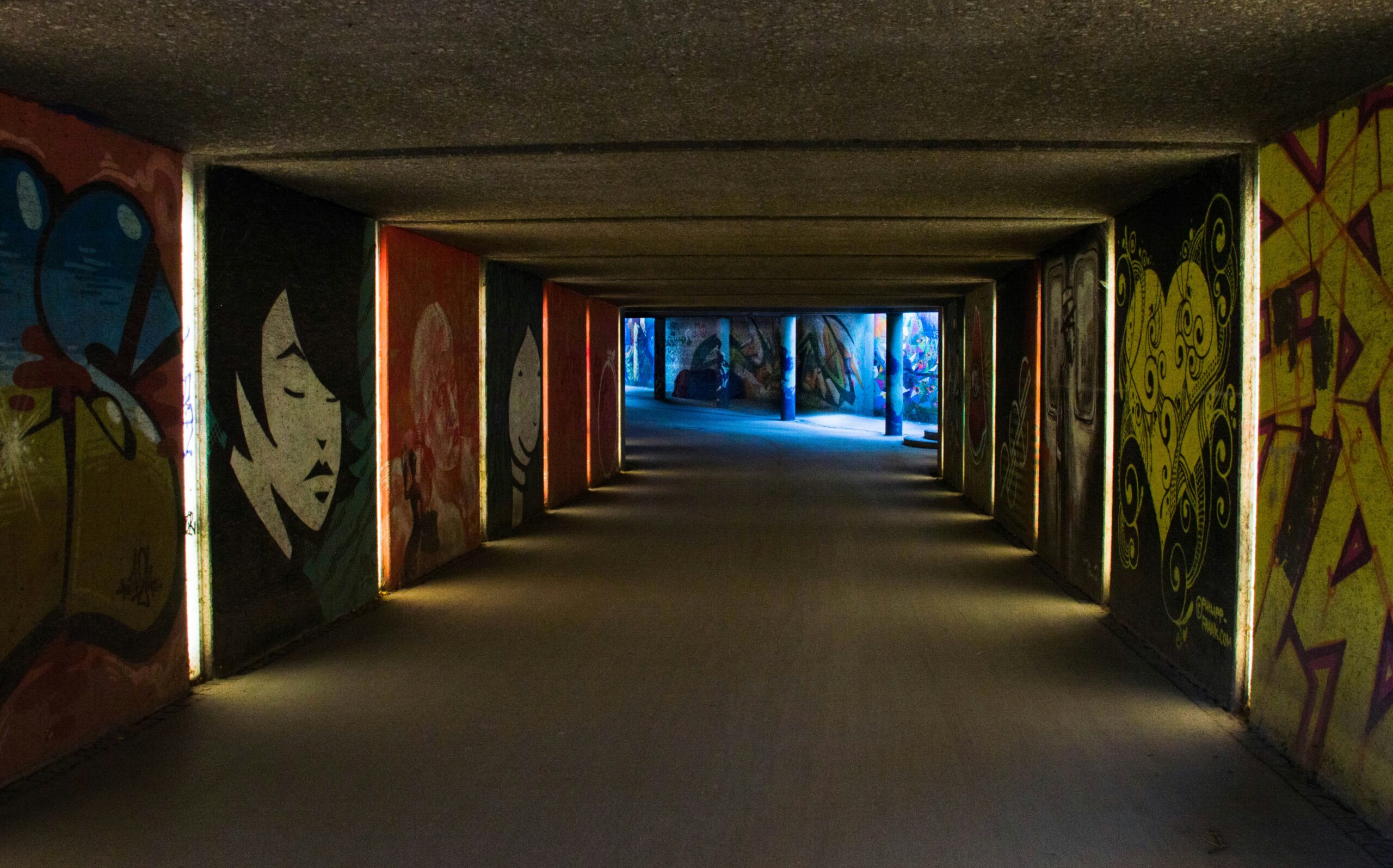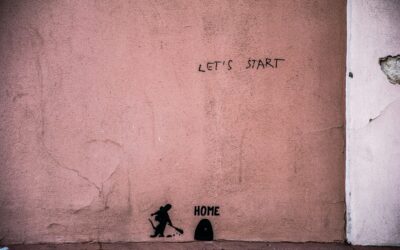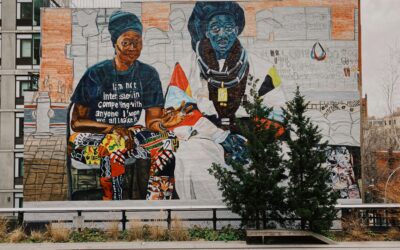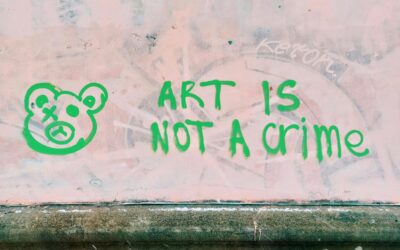Graffiti was once dismissed as vandalism—illegal scrawls on alley walls and train cars, often anonymous and spontaneous. But today, those same styles fill museum walls and auction houses, fetching prices once reserved for old masters. Street art has entered the mainstream, and the line between public rebellion and gallery exhibition has never been blurrier.
In this two-part article, we’ll explore how graffiti evolved from subversive tagging into celebrated art, why institutions have embraced it, and what tensions remain between the street and the white cube.
From Tagging to Art: A Brief History of Graffiti
🧱 The Birth of Modern Graffiti
Modern graffiti as we know it began in the late 1960s and early 1970s in New York City. Young people, often from marginalized communities, began “tagging” their names or pseudonyms on walls, subway trains, and public spaces.
One of the first to gain fame was Taki 183, a Greek-American messenger who wrote his tag across Manhattan. His tags inspired others, and soon the city was filled with stylized names, elaborate lettering, and territorial markings. Graffiti evolved into a coded language of identity and presence in a city that ignored many of its residents.
Graffiti was fast, illegal, and ephemeral—qualities that defined its rebellious appeal.
🎨 The Style Explosion
As graffiti grew, so did its complexity. Crews competed to create more elaborate pieces: colorful, layered, three-dimensional letters and huge murals on subway cars.
This period saw the emergence of sub-genres:
Throw-ups (bubble-style, quick letters)
Wildstyle (complex interlocking forms)
Pieces (short for “masterpieces”)
Graffiti was no longer just about a name—it became an art form rooted in style, innovation, and risk.
The Rise of Street Art
While graffiti focused on letterforms and tags, street art broadened the visual vocabulary. Emerging in the 1990s and 2000s, street artists began using stencils, wheatpastes, stickers, and sculptures to make public visual statements.
Unlike graffiti, which often aimed inward—toward other graffiti writers—street art often engaged the general public directly.
🖌️ Notable Street Artists:
Banksy: The anonymous British artist known for politically charged stencils and public interventions.
Shepard Fairey: Creator of the “OBEY” campaign and the “Hope” poster of Barack Obama.
JR: A French artist who pastes massive black-and-white portraits in public spaces around the world.
While graffiti grew out of hip-hop culture, street art drew from punk, conceptual art, and design. Both, however, challenged the ownership of public space.
Institutions Take Notice
By the early 2000s, galleries and museums began to take interest in street art and graffiti. What was once dismissed as vandalism became the subject of exhibitions, books, and academic studies.
🏛️ From Wall to White Cube
In 2006, the Brooklyn Museum held “Graffiti”, a major exhibition featuring works from early NYC writers.
In 2008, Banksy curated “Cans Festival” in London, transforming a tunnel into a temporary street art gallery.
Today, pieces by graffiti legends like Futura, Dondi, and Lady Pink are collected by major institutions.
Auction houses followed. In 2020, a Banksy piece titled “Game Changer” sold for over £16 million to support the NHS.
The Irony of Legitimization
This newfound legitimacy came with tension. Many early graffiti writers rejected the art world’s embrace. For them, graffiti was never meant to be in a museum—it was anti-institutional by nature.
❓Who Decides What’s “Art”?
The same authorities that once arrested graffiti artists were now promoting sanitized versions of their work. City councils commissioned murals by former “vandals,” while continuing to arrest those who painted without permission.
This contradiction is not lost on street artists, many of whom walk a delicate line between rebellion and recognition.
The Blurred Line: Questions of Authenticity
At the heart of this shift lies a fundamental question: when does street art stop being street art?
🔁 Context Is Everything
A tag on a subway car is illegal; the same tag on a canvas in a gallery is praised. But remove the work from its urban context, and some argue it loses its soul.
Street art is often:
Site-specific
Temporary
Dialogic (engaging its environment)
Turning it into a commodity alters its meaning.
Capitalism Meets the Wall
The commodification of street art brings economic opportunity—but also conflict.
💰 From Street to Sotheby’s
Collectors now treat graffiti and street art as investment assets. Works by Basquiat, once a homeless graffiti artist, now sell for over $100 million. Street-inspired pieces line the walls of luxury apartments and corporate offices.
Even brands have jumped in. Nike, Louis Vuitton, and Red Bull have collaborated with street artists for marketing campaigns, sometimes borrowing the “edge” of graffiti without its risk or message.
😕 The Gentrification Paradox
In many cities, street art becomes part of gentrification. A once-overlooked neighborhood gets an “artsy” makeover through public murals. Tourists follow. Developers raise prices.
The irony is deep: communities that created street art to express struggle are priced out of those same areas once the art becomes trendy.
Legal vs. Illegal: Does It Still Matter?
In recent years, the line between illegal graffiti and authorized street art has blurred beyond recognition.
✅ Legal Walls and Commissions
Many cities now designate “legal walls” where artists can paint freely. Some organizations even pay artists to beautify neighborhoods. While this gives street art visibility and safety, it raises a question: Is art still rebellious if it’s approved?
❌ The Criminalization Continues
Despite the praise street art receives, thousands of young people are still arrested for graffiti. In places like Singapore or Jakarta, graffiti is still treated as a serious crime.
Legal or not, the act of placing art in public without permission remains controversial—and often risky.
Case Study: The Rise and Fall of 5Pointz
5Pointz, a warehouse in Queens, New York, was once the global mecca for aerosol art. Artists from around the world came to paint its walls. It was a living museum—unauthorized but widely respected.
In 2013, the building’s owner whitewashed the walls overnight to make way for luxury condos. The artists sued—and won. In 2020, a federal court awarded them $6.7 million in damages under the Visual Artists Rights Act.
The case marked a turning point: graffiti artists had legal protection as creators of “recognized works of art.”
Still, the walls are gone. What remains is a lesson about art, property, and power.
The Global View: Different Cities, Different Stories
Graffiti and street art have taken on unique forms across cultures:
🇫🇷 Paris
Parisian street art is rich with political and poetic content. Artists like Miss.Tic use stencils to comment on love, feminism, and surveillance.
🇮🇩 Jakarta
In Indonesia, graffiti often serves as youth expression and protest. In cities like Yogyakarta and Jakarta, murals criticize corruption, inequality, and environmental destruction—despite legal risks.
🇮🇷 Tehran
In Iran, street art is heavily censored. Artists must navigate strict restrictions, often hiding their identities. Some paint at night, using codes and metaphors to bypass control.
🌍 Africa
In countries like Kenya and South Africa, street art merges activism with tradition. Artists address issues like tribal identity, gender violence, and political change.
Digital Street Art: The New Frontier
With social media, street art now exists in two places: the physical wall and the digital feed.
📱 Instagram, Virality, and Exposure
Platforms like Instagram have amplified street art’s reach. A mural painted on one corner of Berlin may go viral and be seen in Buenos Aires within hours. Hashtags and geotags have turned artists into influencers.
🖼️ NFTs and Virtual Murals
Some street artists have ventured into NFTs, creating digital versions of their work. While some see this as empowerment, others view it as a detachment from the real, physical city—the very thing that defined the movement.
What Street Art Still Does Best
Despite the fame and money, street art’s power remains its ability to interrupt the everyday. You might be walking to work and see a stencil that makes you pause, think, or smile. That’s magic.
Unlike ads, which push a message, good street art invites reflection. It doesn’t always tell you what to think—but it gives you something to feel.
Final Reflections: Who Owns the Wall?
So, graffiti or gallery? The answer might be: both, and neither.
Street art exists in a tension—between freedom and fame, rebellion and recognition, raw expression and curated exhibitions. Some artists embrace the gallery. Others reject it entirely. Most live somewhere in between.
But perhaps the power of street art isn’t where it’s displayed—but why it exists in the first place. Whether sprayed illegally at 3 AM or carefully painted on commission, street art reminds us that the city belongs to the people—and that even a blank wall can speak volumes.
As long as there are walls, voices will rise to meet them.




